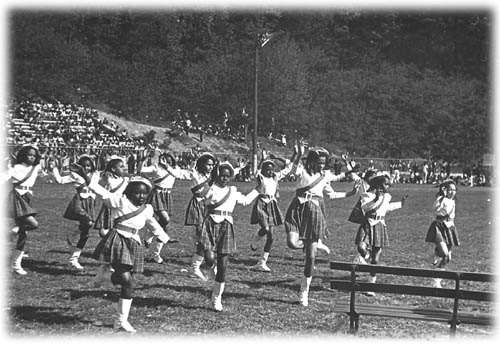This finding aid has been moved to our new website: Heritage of Black Highlanders
Heritage of Black Highlanders Collection
ca. 1888-1972
M77.10.1–5 ; OS77.10.1-3

"May Day at the Stadium in the 1940's", Heritage of Black Highlanders Collection,
D.H. Ramsey Library Special Collections, UNC Asheville 28804
"African-Americans helped create what we know today as home. The labors of women and men helped build our land while the lives they lived helped create the mountain culture. Black children learned from their elders skills needed to survive and prosper as Asheville and Buncombe County experienced and emerged from the Reconstruction era. What we do with this remarkable inheritance is entirely up to us."
-Dr. Dwight Mullen, from An Unmarked Trail, exhibit created by Debbie Miles, Center for Diversity Education.

